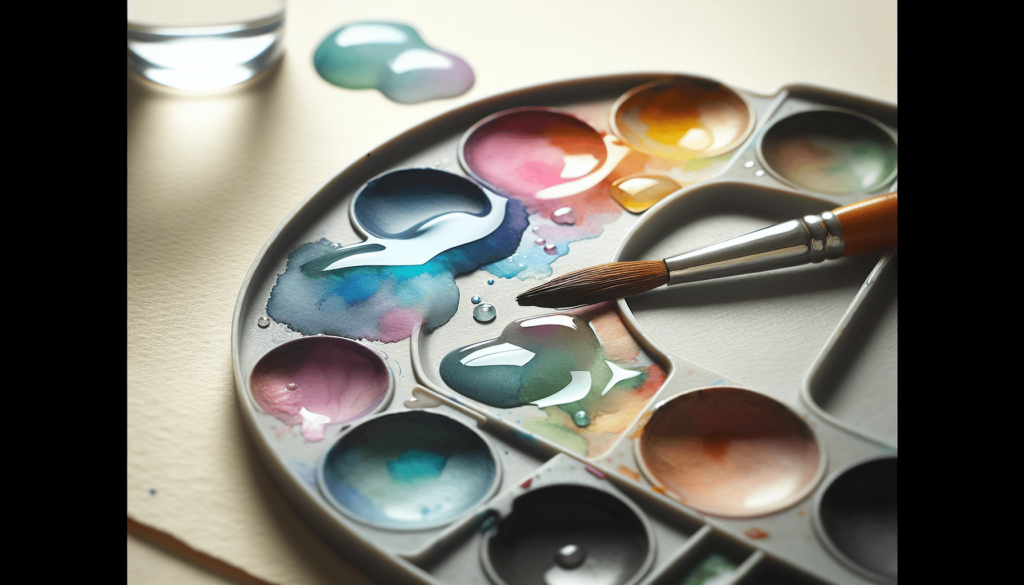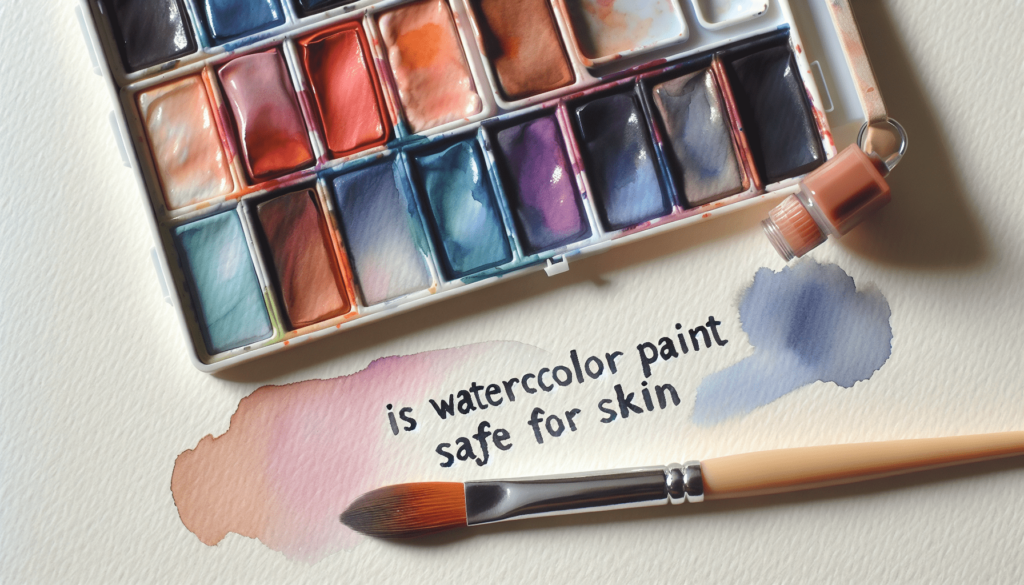In considering whether watercolor paint is safe for skin, it is essential to understand the composition and intended use of these paints. Watercolor paints are typically formulated with pigments, water, and a binding agent, commonly gum arabic. While these ingredients are generally non-toxic when used appropriately on paper, their safety for direct skin application is not guaranteed. Certain pigments may cause irritation or allergic reactions, and the use of binding agents on skin is not recommended. To ensure safety, it is prudent to use products specifically designed for dermal application, such as cosmetic-grade paints, which are rigorously tested for skin compatibility. Have you ever wondered if the watercolor paints you enjoy using in your artwork are safe for skin application? This question is a pivotal one, especially for parents, artists, and hobbyists who often find themselves wanting to dabble a little color on their skin, either for fun or as part of a creative process.

Understanding Watercolor Paint Composition
Watercolor paints are unique in their composition and effects. Unlike other paint types, they are known for their transparency and ability to create subtle washes of color. However, to determine if they are safe for skin, it’s essential to understand what they are made of.
Primary Ingredients in Watercolor Paints
Watercolor paints typically comprise three main ingredients:
- Pigments: These provide the paint’s color. Pigments can be either natural (derived from minerals or plants) or synthetic (manufactured chemically).
- Gum Arabic: This is the binder that holds the pigment together and allows it to adhere to the paper once water has evaporated.
- Additives: These could include substances to improve texture, shelf-life, or other properties.
Types of Pigments
Here’s a table summarizing common pigments found in watercolors:
| Type of Pigment | Source | Consistency | Toxicity Level |
|---|---|---|---|
| Natural | Minerals/plants | Varies | Low |
| Synthetic | Manufactured chemicals | Consistent | Varies |
While gum arabic and most additives used in professional-grade watercolors are non-toxic, pigments are where you need to pay closer attention.
Skin Absorption: How Watercolor Interacts With Skin
Skin absorption refers to the process by which substances come into contact with your skin and penetrate into the deeper layers. It’s crucial to understand this concept because just because something is safe to touch does not necessarily mean it’s safe for prolonged skin application.
Factors Affecting Skin Absorption
Different factors can influence how a substance interacts with your skin:
- Skin Type: Thinner or more sensitive skin might absorb substances more readily.
- Duration of Exposure: The longer a paint remains on the skin, the higher the risk of absorption.
- Presence of Cuts or Abrasions: Any damage to the skin barrier can increase the likelihood of absorption.
Watercolors on Skin
Because watercolors are water-based and generally non-toxic, brief, incidental contact with the skin is unlikely to cause harm. However, prolonged exposure can dry out the skin and potentially irritate it, especially if the formulation includes certain preservatives or additives.
Potential Risks: Ingredients to Watch
To determine if watercolor paint is safe for skin application, scrutinize the ingredient list. While most watercolor paints marketed for artistic use are labeled non-toxic, certain components can pose risks.
Common Harmful Ingredients
Some pigments and additives in watercolor paints can be harmful. Here’s a closer look:
| Ingredient | Potential Risk | Notes |
|---|---|---|
| Cadmium Pigments | Toxic if ingested or inhaled | Some are labeled hazardous |
| Cobalt Pigments | Can cause skin irritation | Usually found in blues and greens |
| Phthalates | Linked to various health issues | Sometimes used as plasticizers in some paints |
| Formaldehyde | Skin irritant and potential carcinogen | Used in small amounts as a preservative |
Label Warnings
Always check the label. Products labeled [AP] (Approved Product) or [CL] (Cautionary Label) by the Art and Creative Materials Institute (ACMI) indicate safety levels:
- AP (Approved Product): Suitable for use by children; non-toxic.
- CL (Cautionary Label): Not suitable for use by children; may have toxic properties.
Comparing Watercolor Paints to Face Paints
Face paints are specifically formulated for safe skin application. To understand the relative safety of watercolor paints, a comparison is instructive:
Composition of Face Paints
Face paints are typically formulated with:
- FDA-approved pigments: These are rigorously tested for skin safety.
- Paraben-free preservatives: Reduce potential for skin irritation.
- Hypoallergenic Bases: Designed to be less likely to cause allergic reactions.
Table: Watercolors vs. Face Paints
| Feature | Watercolor Paints | Face Paints |
|---|---|---|
| Pigment Safety | Varies (natural and synthetic) | FDA-approved |
| Base | Gum Arabic | Hypoallergenic bases |
| Additives | Varies | Paraben-free |
| Regulation | Generally not skin-specific | Specifically regulated for skin use |
Safety for Children
When considering what to use on children’s skin, face paints are a significantly safer option due to their skin-specific formulation.

Guidelines for Safe Use
Should you decide to use watercolor paints on your skin for temporary art, follow these guidelines to minimize risks:
Patch Testing
Before applying a substantial amount, do a patch test:
- Apply a small amount of diluted paint to an inconspicuous area of skin.
- Wait 24 hours to observe any reaction.
Avoid Sensitive Areas
Steer clear of applying watercolors near:
- Mouth
- Eyes
- Nostrils
Limit Exposure Time
Prolonged exposure increases the risk of skin irritation and absorption of harmful substances. Wash off the paint promptly with gentle soap and water after use.
Opt for SFX Alternatives
Specialized body or face paints designed for skin application are safer and readily available, offering a suitable replacement for watercolor paints when skin contact is desired.
Emergency Measures
In case of an adverse reaction following the use of watercolor paints on your skin, take immediate steps:
Identify Symptoms
Look out for:
- Redness
- Itching
- Swelling
- Rash
Initial Actions
- Rinse Skin: Wash the affected area with plenty of water and mild soap.
- Apply a Cold Compress: This can reduce swelling and irritation.
Consult a Professional
If symptoms persist or worsen, consult a dermatologist or medical professional.
Conclusion: Final Verdict
Is watercolor paint safe for skin? The answer is nuanced. While many watercolor paints are labeled non-toxic, this does not inherently make them safe for prolonged skin application. The presence of potentially harmful pigments and additives, combined with the risk factors associated with skin absorption, suggests caution. Opting for products specifically designed for skin use, such as face paints, is generally the safer alternative.
Understanding your materials and making informed choices ensures both your safety and the enjoyment of your artistic endeavors. Stay informed, stay safe, and keep painting—just make sure you’re choosing the right tools for the task.



